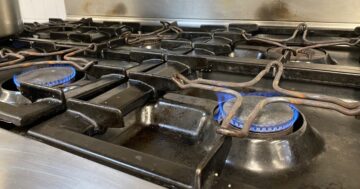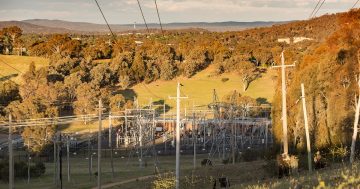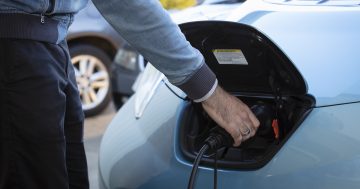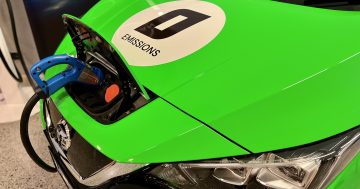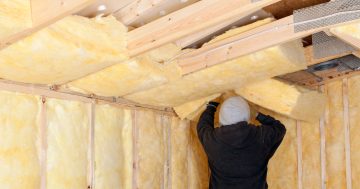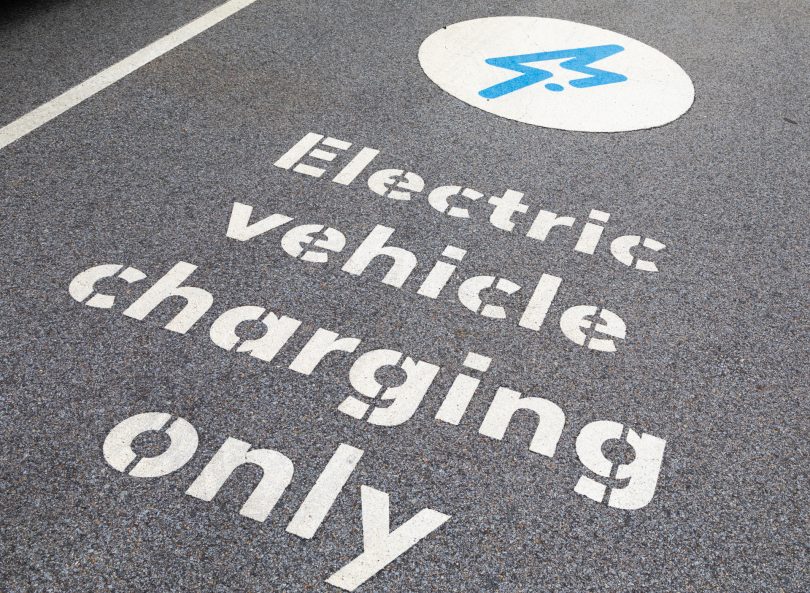
The ACT Government has been told to improve EV parking and charging infrastructure if it’s going to meet its renewable targets. Photo: Michelle Kroll.
The ACT will have to improve incentives, parking and charging infrastructure for electric vehicles and start work on a plan to electrify hot water systems as part of its transition to renewable energy.
They are some of the recommendations put forward by the ACT Legislative Assembly’s Standing Committee on the Environment Climate Change and Biodiversity.
The Territory government has set a 2045 target of net-zero emissions. In 2020, it announced it had reached its first aim of 100 per cent renewable energy – sourced through contracts with large-scale generators around the country.
The latest report highlighted that more work needs to be done, especially around gas heating and water.
The ACT Government wants to have 60,000 households disconnected from gas by 2025. By 2045, it wants gas gone.
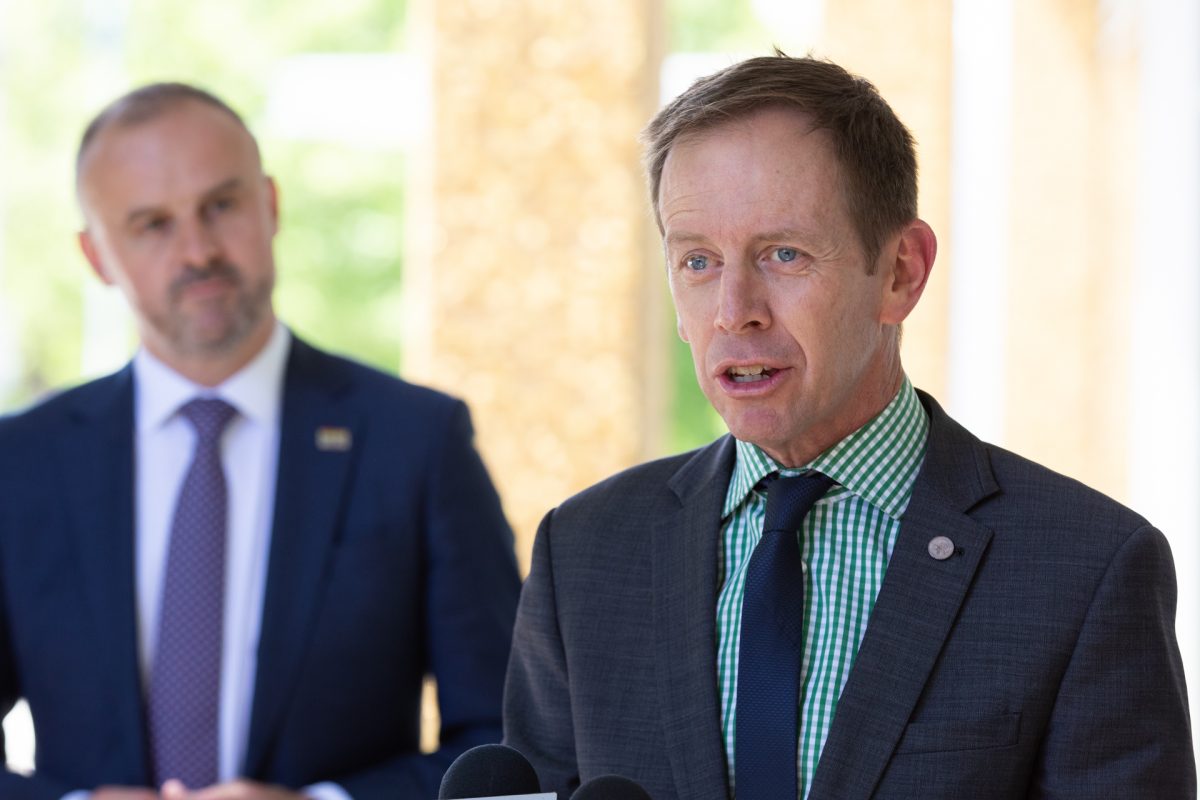
Minister for Energy and Emissions Reduction Shane Rattenbury and Chief Minister Andrew Barr agreed in their Labor-Greens 2020 Parliamentary and Governing Agreement to phase out gas by 2045. Photo: Michelle Kroll.
Based on the ACT having 150,000 household gas connections, phasing out fossil gas by 2045 would require 6,000 disconnections a year or, if the target is 90,000 households being disconnected by 2030, then 9000 disconnections would be needed annually.
But the current scheme to phase these out is not working quickly enough.
In 2018-19, the government’s current energy efficiency improvement scheme delivered 770 replacements of gas appliances with heat pumps, which increased to around 2560 replacements in 2019-20.
Forward projections to 2025 prepared for Evoenergy suggest that under current policy settings, gas connections are predicted to drop by just over 3000 a year, only half of what is necessary to achieve the targets.
According to the report, home heating and water heating make up the greatest energy use in the ACT and are dominated by inefficient and older gas appliances.
One of the reasons proposed for the scheme’s underperformance to date is that there isn’t any market competition for replacing gas heaters and hot water systems with electric ones and that the scheme doesn’t have any performance measures or targets.
The government has therefore been told to take action on both of these measures.
The committee recommended the ACT Government consider developing a plan covering the financial, social, business and industry transition of fully electrifying our hot water systems in the ACT.
It was also called on to examine how gasfitters could be retrained to support this move away from gas.
But gaps in the government’s renewables strategy were not just identified in the area of gas alone.
The transport sector accounts for 64 per cent of emissions in the ACT.
The committee said that decarbonising this sector must be a priority for the ACT Government.
Its report acknowledged the most significant barrier to accessing EVs is the cost. Even with registration waived and a stamp duty exemption, the cheapest new EV vehicle still costs over $46,000.
There is also no market for second-hand vehicles in the Territory and the charging and parking infrastructure is not up to scratch.
Therefore, the government was told to explore targets to increase charging infrastructure and establish other incentives that may help EV uptake such as negative registration fees, transit lane access, and preferred parking arrangements for private EVs.












